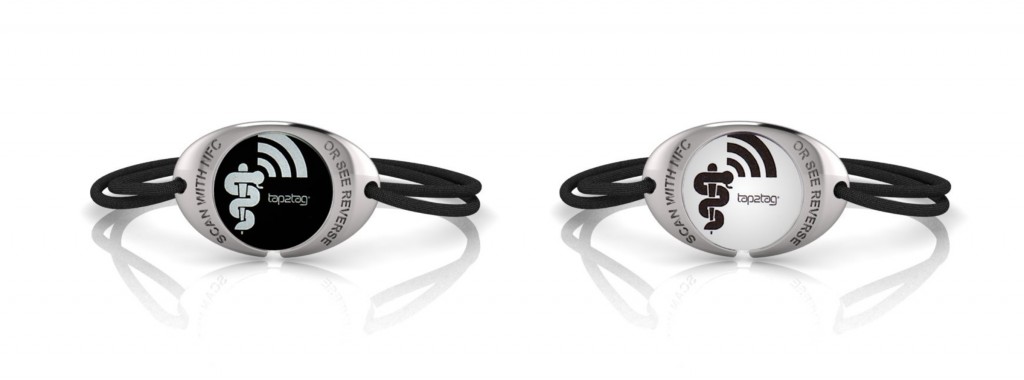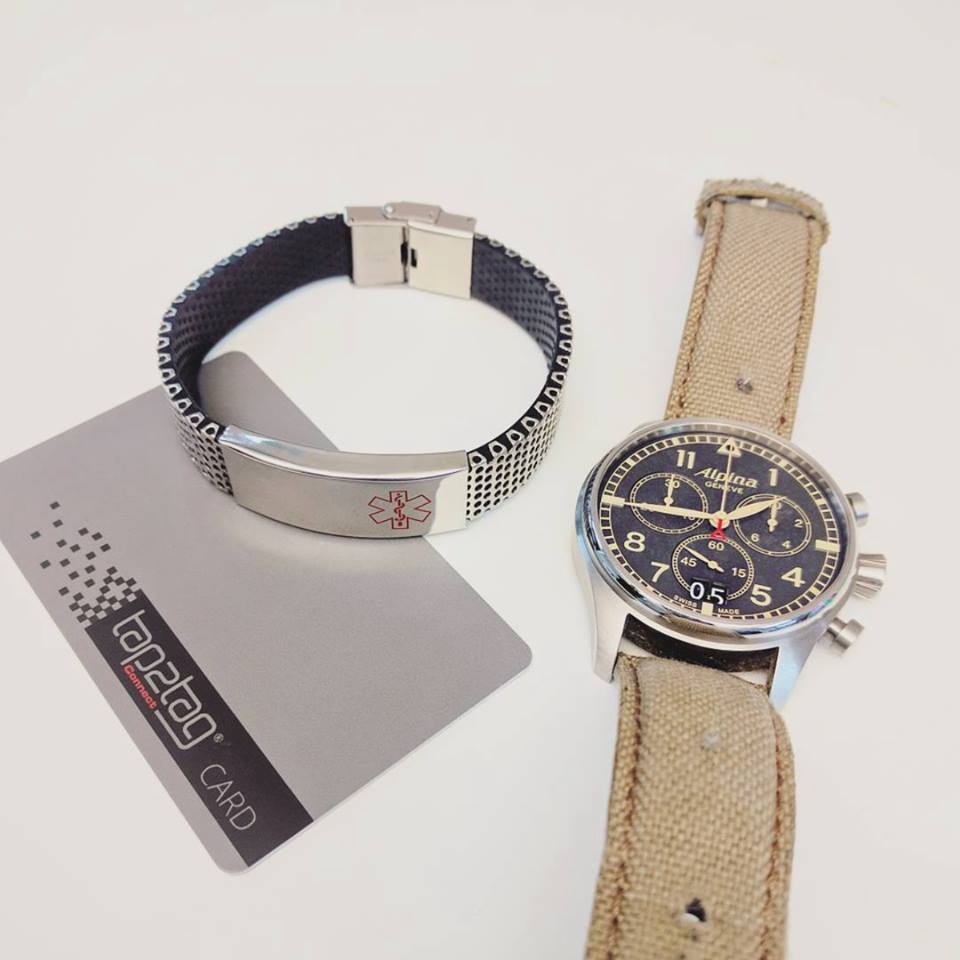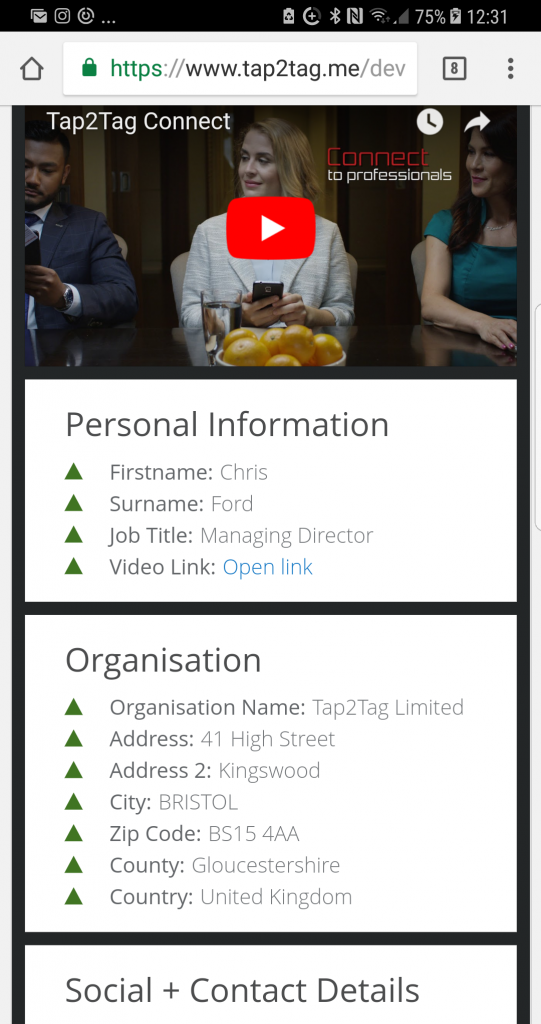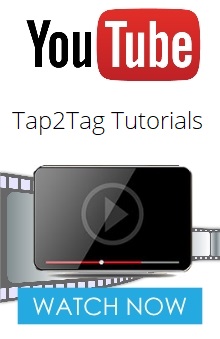As a biker and lifetime HOG member I understand the need to stay safe when riding on two wheels. Providing the relevant information to emergency services, if you are unfortunate to be involved in a road traffic collision (RTC), and being able to provide this information quickly and efficiently is critical. Paramedics suggest that the first 10 minutes after a RTC are the most crucial.
There have been a number of initiatives in the UK to help protect bikers. When taking my Advance Motorcycling Test I was made aware of the "Green Dot Scheme". The idea was to place a green dot on the right hand side of your helmet to notify paramedics that there was an emergency card inside the rider's helmet. It's a great idea but has a few problems.
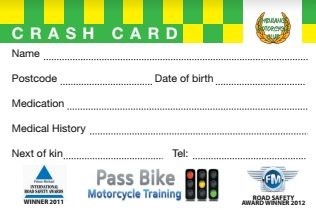
The first is awareness. Having spoken to over 1,000 paramedics throughout the UK hardly anyone had heard of the scheme. The scheme is promoted in the south west but members of the South Western Ambulance Service and the Great Western Air Ambulance had not heard of it.
The second issue is data. The card shows the amount of space you have to disclose your medical information. As an ageing HOG my medical conditions are a lot longer than one line!
The third issue is the helmet. Paramedics will ensure that your helmet is always kept with you in hospital as it provides evidence to the police and hospital teams about the RTC. But paramedics will be reluctant to remove the helmet if there is inevitable head trauma or spinal injuries. So the location of the card INSIDE the helmet will delay the time taken to get to the important information about the patient.
So what are the alternatives?
On a chat group on Facebook there was a debate about the best medical alert system to use when riding in the UK and abroad. Here is a summary of the comments
1. "I've got ICE contacts on my phone"
2. "Driving licence in my wallet, which is in my pocket"
3. "I've got a dog tag around the neck"
4. "I've got a SOS Talisman necklace". These are the pendants with a hidden compartment where you can write out your medication.
5. "I have used the health ID app on my iPhone to store my critical information"
6. "DNR tattooed on my left breast"
7. "My number plate and ID in my wallet should suffice?"
8. "I have an etched dog tag with my details on it"
Let's deal with these points in turn.
Points 1 and 5 fall away because paramedics will NEVER check your mobile phone at a RTC. Firstly the phone may well be smashed but secondly there is protocol from the Ambulance Trusts to deter all paramedics from checking phones and wallets/purse at a RTC. The reason is worrying and part of our litigious society. There have been too many cases where Ambulance Trusts have been sued by "patients" stating that they had large amounts of money or high end mobile phones that had "obviously" been stolen by the paramedic attending the scene. Hence the no phone/no wallet searches at the screen.
Point 2 will give the attending emergency services proof of identity but that's about it. Your driving licence does not tell the paramedic attending about the medication you are taking or who your next of kin are.
Point 3 and 8 - Dog tags are GREAT! Paramedics are trained to look for medical information over the heart and on the wrist (the main blood lines). The one problem with a dog tag is the limit on the information the hold (name, emergency contact number and one line for medical conditions). Not too good if you have more than one emergency contact or you are taking more than one form of medication. But they will be seen and that's a good thing.
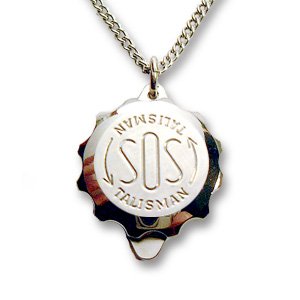
Point 4 - The SOS Talisman.
On the face of it this is a great idea. Store your handwritten information on a piece of paper and place it in the hidden compartment in the necklace. However paramedics hate them. They are fiddly to unscrew, the writing is often illegible and they have no idea how old the information is on the paper.
Sarah Willingham (formerly from Dragons' Den) much preferred this method but she had obviously not spoken to anyone in the emergency services.
Point 6 - "DNR on the left breast"
Loving the commitment to body art and this does give a clear instruction. Did you know that this is not binding in law and each and every Trust in the UK will have their own procedures with dealing with a "Do No Resuscitate" instruction. This usually means that a written document needs to be available to the attending responders before they can accede to that instruction. And what happens if you can be saved but are on medication or you want you nearest and dearest to be with you by your hospital bed. I'm not too sure how many people are willing to have the mobile numbers of their next of kin tattooed on their right breast (and what happens if mobile numbers change). It's all a bit of an inky nightmare!
Point 7 - "Number plates and licence in the wallet"
Anyone see the problem with this? If you are riding in France how long to you think it will take the French to contact DVLA for your details? They have your licence (if they bother to check your wallet) and, after a significant amount of time they might get your name and home address. But what about your next of kin? You are multiple injuries and you have a 50% chance of pulling through. Wouldn't you want them to know that you are in peril?
What is clear is that bikers are doing what they can to protect themselves when riding but the solutions are incomplete. AND THAT'S WHY TAP2TAG REALLY WORKS.
A Tap2Tag wristband means it sits on the blood line. The information can be accessed within 3 seconds when a paramedic uses THEIR OWN phone to scan your data. The information you can store is virtually unlimited and is date stamped to show first responders when it was last updated. You can even store documents within your Tap2Tag medical profile such as a prescription, Hospital Passport, Care Plan or DNR letter. It also sends an automatic text to your next of kin when the information is scanned.
There are plenty of systems out there to protect you when riding out but NONE have the complete solution offered by Tap2Tag.
For more information check out our medical bands, key fobs and cards at www.tap2tag.me



